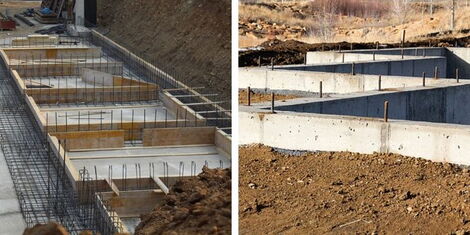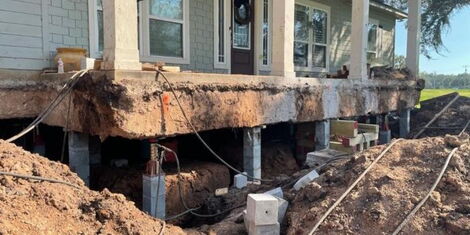The foundation is a critical cog in building and the start of any construction project.
Foundations keep the building structure upright and are one of the primary sources of strength of any construction project.
It is thus imperative to resist having a substandard and poorly done foundation as it may put lives at stake and costly.
There are solid reasons to consider investing in reinforcing the foundation of your house.

Floods, wind forces, and general soil erosion can all be key concerns for property owners over time.
Most existing structures can be reinforced. There are various methods to doing so.
However, it’s best for a structural engineer or residential contractor to provide specific recommendations for your home.
The signs to look out for before embarking on foundation strengthening include;
Foundation Cracks
Visible cracks typically appear when narrow ones widen, meaning the problem is likely more extensive than it seems. If there is any crumbling of the exterior walls, this is a key concern.
Warped Ceilings and Walls
If there is warping, such as the walls or the ceiling is no longer flush and flat, this can indicate a house shifting has occurred.
It can also be found by looking at the corners of the rooms of the home. They may no longer match well.
Water Damage
Foundation damage stems from water. If water does not drain properly away from the structure, this can create a damaged foundation.
Structural Signs.
This could be seen through sloping stairs, windows that are no longer square, floors that are no longer level, and doors that do not align properly.
A homeowner can strengthen his house foundation through the following techniques;
1. Underpinning
This method is used to either increase the depth of the foundation or repair the foundation if it has significant damage.
Underpinning works best on buildings that have cracks in them.
There are several types of underpinning methods;
Mass Pour: This method is the most commonly used. The foundation is excavated in sections below the footing.
Concrete is placed into each pit exposed. This is repeated until the area is completely underpinned.
Screw Piles and Brackets: A second form of underpinning involves the use of screw piles and brackets,
This can be done by hand or with a smaller excavator.
Piled Raft: This method is used when the entire building needs to be underpinned, which is not that common. If the foundation is too deep for other methods or if the soil is just too hard, this method may be used.
2. Jacketing of Foundations
This method is used when there are columns that require strengthening. This is a common need when adding additional load to the wall, such as through expansions.
In order to ensure the wall is strong enough to accommodate this, it may be necessary to widen or strengthen the foundation.
3. Mudjacking
It is a method for improving the foundation of smaller footprint spaces.
It is often used for steps, small concrete surfaces, and porches. Cement and other materials are injected into small holes that have been placed into the concrete.
The material expands, which helps to raise the slab that is no longer aligned in place.
4. House Lifting and Leveling
This process removes the actual structure of the building from the foundation itself and raises it with screw jacks.
It can help when there is a need to relocate the structure or improve the foundation underneath.

Source: kENYANS.CO.KE












